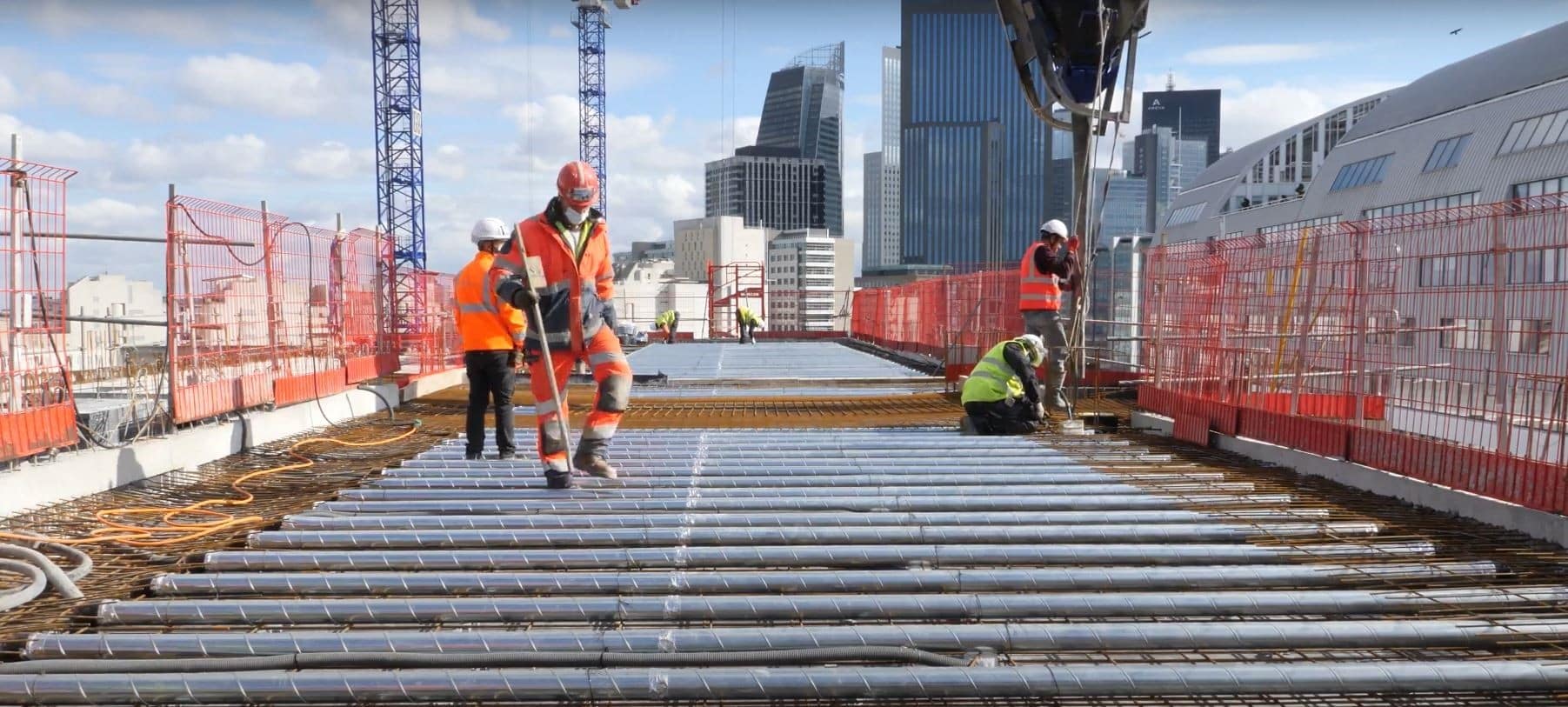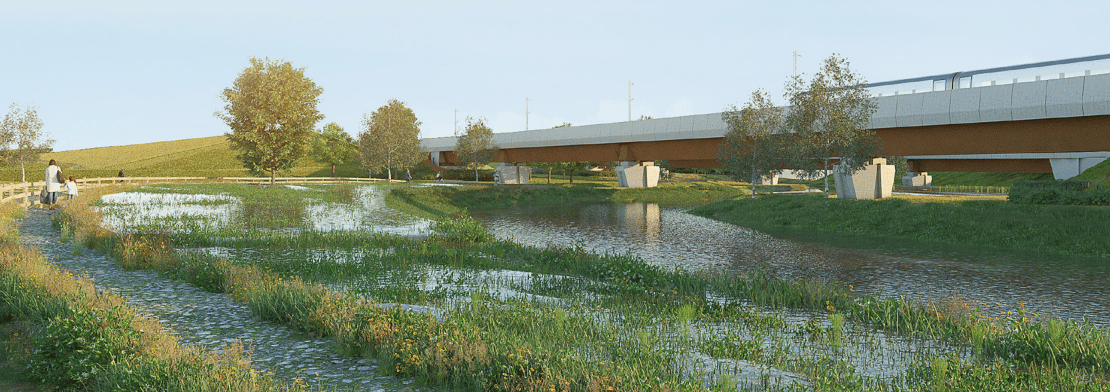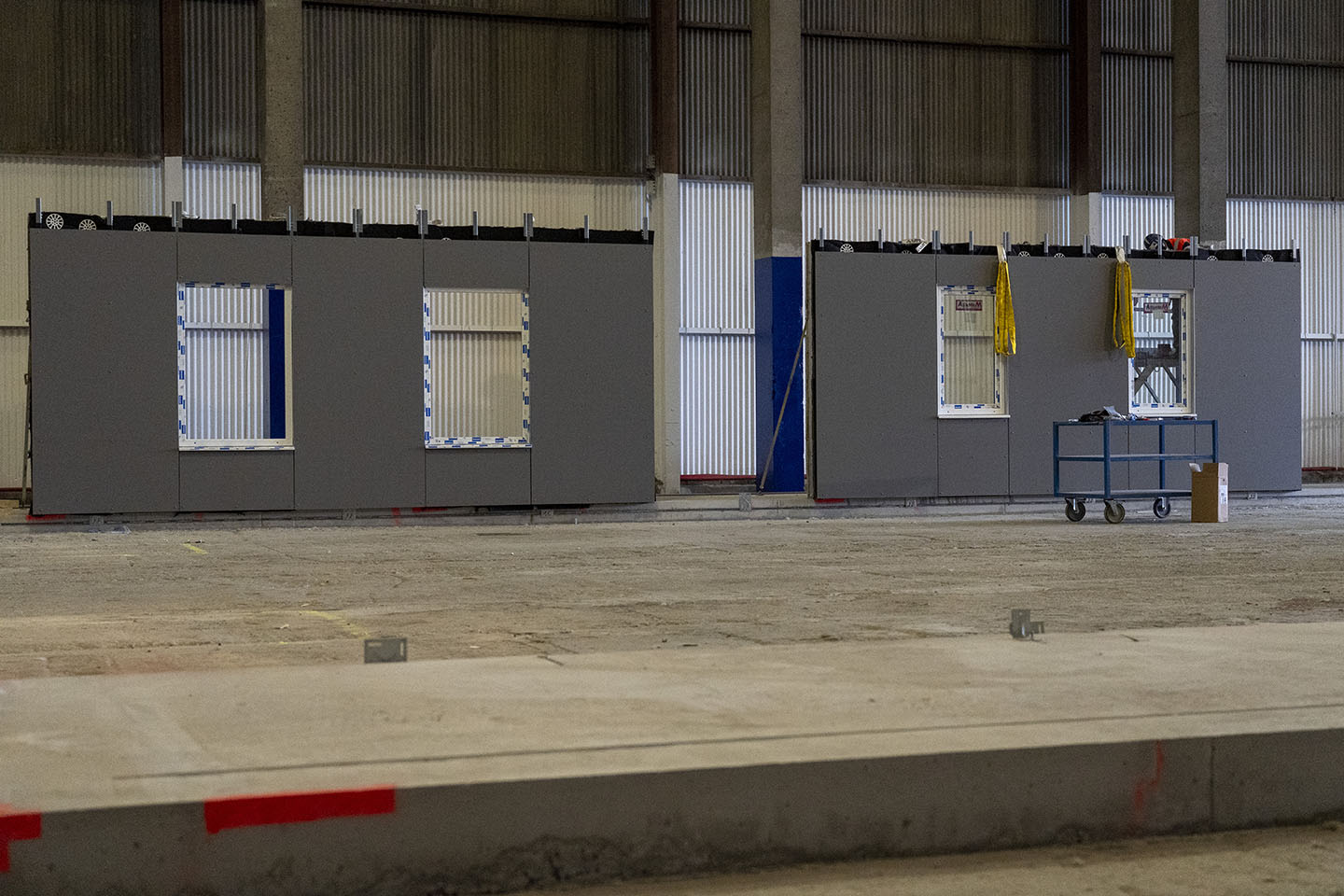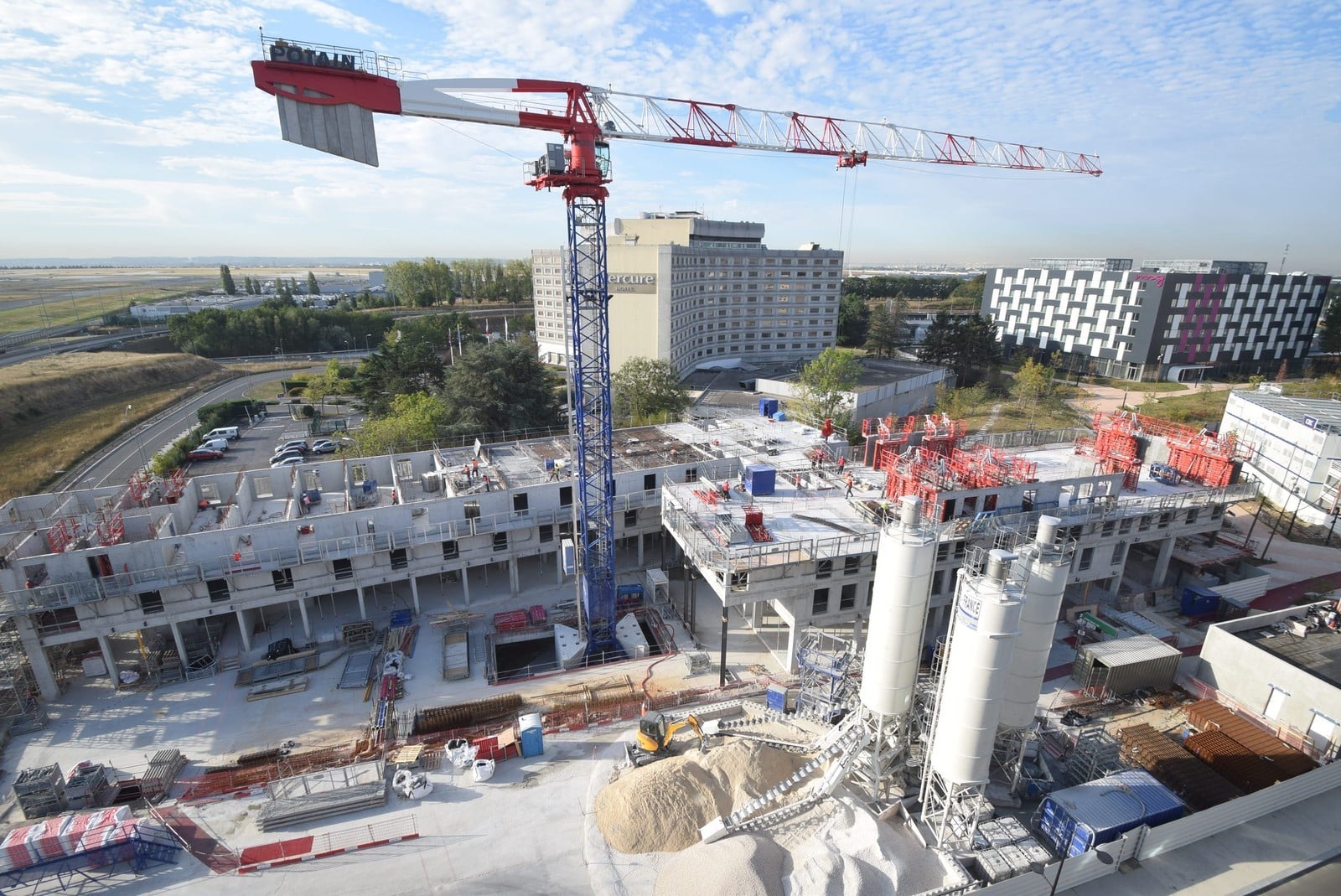
The GREENFLOOR ventilated concrete slab: a new-generation HVAC system
The Greenfloor solution deployed by Vinci Energies’ subsidiary I.C. Entreprise reduces the amount of energy used to regulate the temperature of buildings.

Climate
Reducing greenhouse gas (GHG) emissions linked to the building's energy consumption, thanks to the self-consumption of the energy produced via the photovoltaic roof panels. This energy loop, combined with a second-life battery storage system, makes it possible to supply most of the charging stations for the company's fleet of electric vehicles. Intelligent control of the redirection of the energy (produced/stored) also makes it possible to supply the building's other consumption points (electric heating, sockets, lighting, etc.).
Circular economy
Reusing second-hand electric vehicle batteries to store solar energy is one of the keys to the REVE principle.
REVE is a 100% renewable energy (RE) self-consumption recharging offer for companies wishing to quickly switch their vehicle fleet to electric power without changing their type of energy contract:
– A la carte” sizing of the photovoltaic panel installation
– Energy storage using second-hand batteries from electric vehicles
– Supervision system (“WAVE Plateform” application) developed by VINCI Energies, guaranteeing optimal control of energy distribution between the building and the charging stations.
on which the project has a significant impact
Scope 1 : Conversion of thermal vehicle fleet to electric: reduction of fossil fuels.
Quantification :
Pre-project situation :
Diesel: 71,701 L/year * 2.6 kgeq CO2 = 186 tCO2eq
Post-project situation in the event of a 100% switch from a thermal to an electric fleet:
Diesel: 0 L/year * 2.6 kgeq CO2 = 0 tCO2eq
Balance: 186 t CO2eq avoided
Scope 2 : Direct self-consumption of the energy produced on the roof
Quantification :
Pre-project situation :
130 tCO2eq related to the building
Post-project situation :
37 tCO2 eq linked to the residual electricity consumption from the network (72% saving on the bill).
Scope 3 : Home to work journey – Battery recycling
Quantification :
20% of employees use the charging stations free of charge today
Elimination of 52,800 km per year driven with fossil fuels, at 190 gCO2eq per km, which represents 10.5 tCO2eq avoided. (The KM are not avoided but the energy concerned no longer emits CO2).
Difference in GHG emissions between purchasing new and second-hand batteries
The carbon weight of a new 30 kWh battery is 5 t CO2eq.
According to the proposed methodological note, using a recycled battery is equivalent to 50% less GHG emissions than a new battery, i.e. 2.5 tCO2eq avoided.
Avoided Emissions : GHG emissions become the scope 3 emissions of its customers once the REVE principle is installed.
Quantification : GHG emissions avoided: 192 t CO2eq / year
Clarification on the calculation or other remarks:
Details of the calculation or other remarks: According to the proposed methodological note
Transformation of thermal vehicle fleet to electric: reduction of fossil fuels:
MOBILITY
Pre-project situation :
Diesel: 71,701 L/year * 2.6 kgeq CO2/l = 186 tCO2eq
Post-project situation (in the event of a 100% switch from a thermal to an electric fleet) :
Diesel: 0 L/year * 2.6 kgeq CO2/l = 0 tCO2eq
Theoretical electricity consumption at charging stations for a 100% electric fleet of 30 vehicles
30 LCVs X 1 charge X 40 kWh = 1,200 kWh / day, i.e. for 1 year at 220 working days = 240,000 kwh.
Electricity (60% self-consumption): 144 000 kWh/year * 0gCO2/kWh = 0 kgCO2
Electricity (40% grid): 96,000 kWh/year * 50 gCO2/kWh = 4.8 tCO2
Balance: reduction of 181 tCO2eq
BUILDING
Pre-project situation:
Grid electricity: 28,000 kWh/year * 60gCO2/kWh = 16.8 tCO2
Post-project situation:
Electricity (60% self-consumption): 16 800 kWh/year * 0gCO2/kWh = 0 kgCO2
Electricity (40% grid): 11,200 kWh/year * 50gCO2/kWh = 5.6 tCO2
Balance: annual reduction of 11t CO2eq
Use of recycled batteries
The carbon footprint of a new 30 kWh battery is 5 t CO2eq.
According to the proposed methodological note, using a recycled battery is equivalent to 50% less GHGs than a new battery, thus a reduction of 2.5 tCO2eq
40 k€ (100 m² of PV, 30 kW of storage and 2 charging stations, a Building Management System: WAVE Platform)
January 2021
The facility is located in Boulogne sur mer, in the Pas de Calais department.
There are no restrictions on the geographical area of reproducibility.
SDG 7: AFFORDABLE AND CLEAN ENERGY
SDG 9: INDUSTRY, INNOVATION AND INFRASTRUCTURE
SDG 11: SUSTAINABLE CITIES AND COMMUNITIES
SDG 12: RESPONSIBLE CONSUMPTION AND PRODUCTION
SDG 13: CLIMATE CHANGE MEASURES
Scope of deployment
REVE is aimed at all companies that have the necessary space to install photovoltaic panels, or at any building project (new or existing) that intends to install 1 to 6 double 22 kW terminals.
Deployment capacity
On average, the sales process to a new customer takes 3 months. Implementation takes 6 months, including a declaration of works and a delay before obtaining the batteries. Very few studies are required, it is an almost industrial process.
Companies :
Demouselle Pas de Calais
LESOT
Smart Building Energies
david.desablence@vinci-energies.com
eugenie.guilpain@vinci-energies.com

The Greenfloor solution deployed by Vinci Energies’ subsidiary I.C. Entreprise reduces the amount of energy used to regulate the temperature of buildings.

The Balfour Beatty VINCI joint-venture is responsible for the design and construction of part of Europe’s most ambitious rail project: HS2…

Simple, economical, fast and durable, REHASKEEN® makes it possible to industrialise and accelerate the renovation of energy-intensive buildings…

VINCI Construction is stepping up the pace of sustainable construction by promoting types of concrete with lower carbon emissions. With the launch of its new Exegy

The Power Road® system deployed by Eurovia captures and recovers up to 25% of the sun’s heat energy which is then used to heat buildings and equipment located near the roadway.
AFEP (Association of French large companies) is an association representing 111 of the largest companies operating in France. It participates in the public debate with the ambition to provide pragmatic answers in favour of the development of a competitive and sustainable French and European economy, conducive to the growth of all companies.